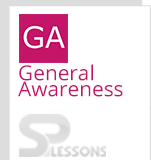 Introduction
Introduction
History is a very important subject for Railway Recruitment exams and UPSC Exams. UPSC NDA and NA Prelims Exam is the combination of Mathematics and General Ability. History is one of the most important topics in the General Ability section. All these questions are easily understandable format. UPSC NDA and NA History Quiz 1 is very useful to get the maximum marks from the General Ability sections. Candidates can check the daily updates at UPSC Official Website
 Pattern
Pattern
| Paper Mode | Subject | Marks | Duration |
|---|---|---|---|
| Paper-I | Mathematics | 200 Marks | 2 hours |
| Paper-II | General Ability | 200 Marks | 2 hours |
 Samples
Samples
1. Rigveda Samhita denotes one-fourth of its hymns to:
-
A. Rudra
B. Marut
C. Agni
D. Indra
-
A. Marble
B. State stone
C. Granite
D. Red sandstone
-
A. Kashmir, Hindukush, Afghanistan
B. Malaysia, Thailand, Singapore, Burma
C. Australia, New Zealand
D. Iran, Iraq and Persian Gulf
-
A. Vedic Rituals
B. Philosophy
C. Astronomy
D. Medicine
-
A. Shakas
B. Kushanas
C. Guptas
D. Greeks
6. Who among the following started the practice of military governships in India , by leaving the military governors called “Strategos” in India?
-
A. Greeks
B. Shakas
C. kushans
D. Parthians
-
A. Sindhu
B. Chenab
C. Saraswati
D. Ganga
-
A. Education
B. Propaganda
C. Discipline
D. All the above
-
A. Radhakant Deb
B. Debendranath Tagore
C. Prasanna Kumar
D. Dwarakanath Tagore
-
A. C Radcliffe
B. William Patrick Spens
C. Edward Percy Smith
D. William Lloyd Roots
11. Who among the following was the first Non-Congress chief minister of India?
-
A. Indulal Yagnik
B. NG Ranga
C. EMS Naboodiripad
D. Shankar Dayal Sharma
-
A. Withdrawal of British from South East Asia
B. Failure of Cripps Mission
C. Failure of August Offer
D. Arrest of Mahatma Gandhi
-
A. Jawahar Lal Nehru
B. Subhash Chandra Bose
C. C R Das
D. Motilal Nehru
-
A. Mahatma Gandhi
B. Lala Lajpat Rai
C. Edwin Samuel Montagu
D. Jawahar Lal Nehru
-
A. Surat
B. Kheda
C. Champaran
D. Ahmedabad



